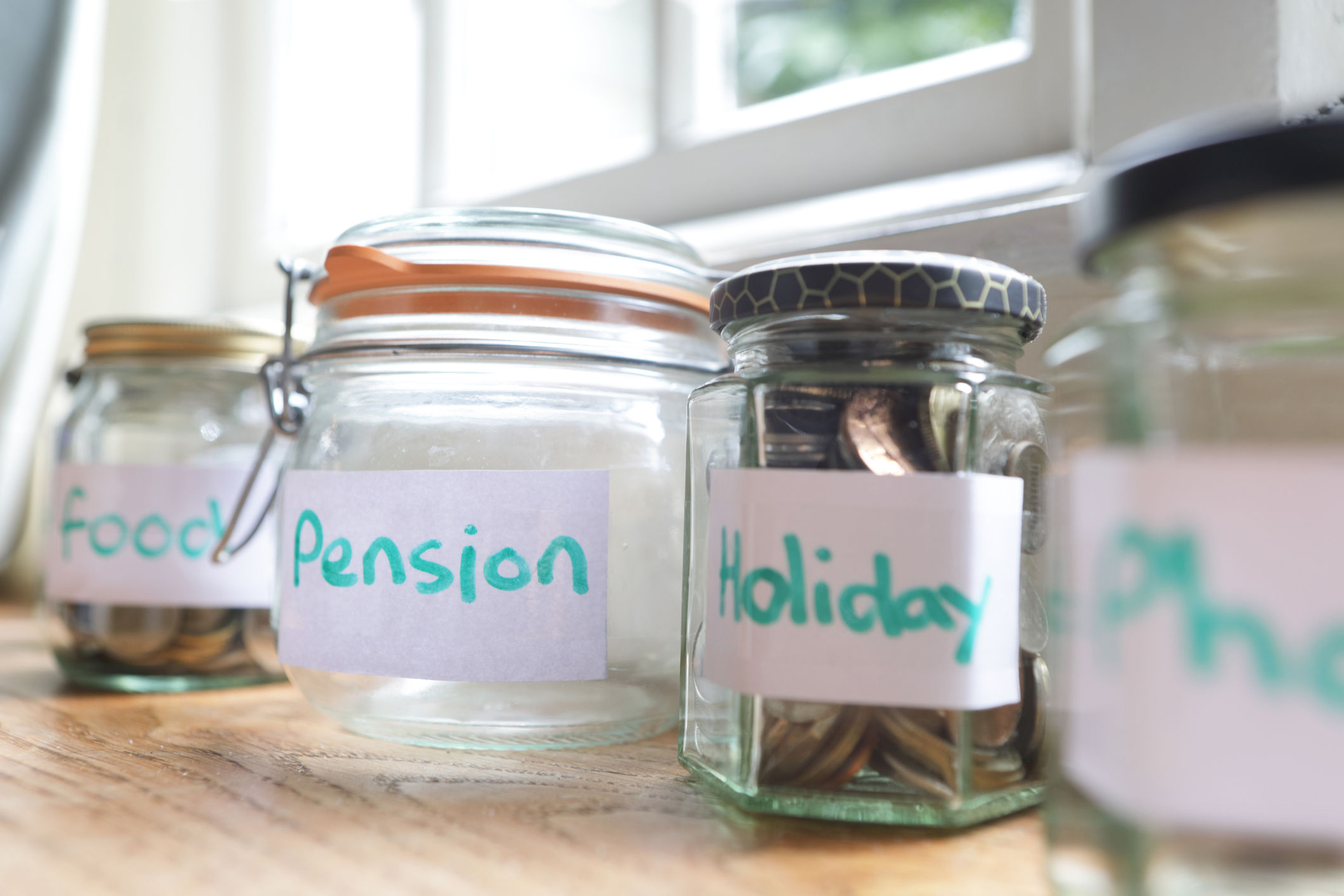A third of pension savers could face hardship after retirement
New research shows a third of pension savers are not putting enough money into their retirement savings to have a comfortable retirement.


A third of pension savers could face retirement poverty, with women, the self-employed, disabled and LGBTQ+ people the hardest hit, research suggests.
Analysis by Scottish Widows has found 36% of savers are heading for a “comfortable retirement” compared with 35% who are projected to struggle when they start to draw down their pension.
The findings were revealed in the pension provider’s 2023 Retirement Report.
MoneyWeek
Subscribe to MoneyWeek today and get your first six magazine issues absolutely FREE

Sign up to Money Morning
Don't miss the latest investment and personal finances news, market analysis, plus money-saving tips with our free twice-daily newsletter
Don't miss the latest investment and personal finances news, market analysis, plus money-saving tips with our free twice-daily newsletter
It features a new National Retirement Forecast (NRF) that uses the Pension and Lifetime Savings Association (PLSA)’s retirement living standard levels to calculate the quality of lifestyle that people are set to achieve when they stop working.
Pension savings are not enough
According to the PLSA, a single person needs £12,800 a year for a minimum living standard in retirement or £19,900 for a couple.
A moderate retirement requires £23,300 for a single person and £34,000 for a couple, while a single person would need £37,300 for a comfortable lifestyle, rising to £54,500 for couples.
The NRF uses a survey of more than 5,000 adults as well as individual interviews to compare the potential retirement lifestyles within reach for different ages, ethnicities, genders and employment statuses, as well as underrepresented groups such as disabled people and the LGBTQ+ community.
Based on current savings behaviour continuing, two-thirds of Brits are on track for at least a minimum lifestyle, Scottish Widows said.
But that still leaves around a third whose retirement income will fall below the minimum living standard.
Much of this difference is driven by those who are saving little or nothing for retirement into a pension and will be heavily reliant on the state pension or pension credits, Scottish Widows said.
Pete Glancy, head of policy at Scottish Widows, says the government can help end retirement poverty by implementing long-term reforms such as ensuring automatic enrolment can support those on lower incomes including the self-employed and getting businesses to address the inequalities faced in the workplace by disadvantaged groups.
“The financial services industry must get better at effectively communicating with diverse groups to build trust and ensure that people of all incomes and demographics understand how to save effectively for retirement,” he says.
There are also steps individuals can take to boost their retirement income as well.
The importance of starting your pension early
Young people in their 20s are the least likely to be on track for even a minimum retirement lifestyle, the report shows, as they may be focusing on other priorities such as housing costs.
Meanwhile, those in their 30s are most likely to reach a comfortable retirement lifestyle, with many benefiting from automatic enrolment.
The report also found that people in their early 60s are of similar likelihood as middle-aged people to reach at least a minimum lifestyle at almost two-thirds, but they are less likely to reach a comfortable standard.
“Building a retirement pot that can sustain you throughout your later years can be a challenge, particularly for younger people who might be struggling to balance competing priorities like saving for a home, rising mortgage bills or paying for childcare,” says Tom Selby, head of retirement policy at AJ Bell.
“However, there are some fairly simple things you can do to boost your pensions. For most people, the starting point is making a budget and prioritising short-term, medium-term and long-term savings.”
To build a decent-sized fund, Selby suggests, a very rough rule of thumb often quoted suggests taking the age you first start contributing, halving it, and then aiming to contribute that proportion of your salary to a pension.
For example, someone who starts contributing at age 20 might aim to contribute 10% of their salary each year, while someone who starts at age 30 might aim for 15% of their salary.
The self-employed shortfall
It isn’t a surprise those in full-time work are more likely to be financially prepared for their retirement.
A full-time salaried employee will have benefited from being automatically enrolled into a pension scheme.
But the self-employed are left to manage their own pension savings, which can be unpredictable due to fluctuating sources of income.
The average full-time employee is on track to receive £27,000 a year in pension income, almost three times what the average part-time employee and the average self-employed person are on track for.
The Scottish Widows forecast shows that while the self-employed do proportionately save more outside of a pension, this is not nearly enough to close the gap.
Worryingly, almost a quarter say they have reduced their pension or long-term savings due to the rising cost of living, much higher than the 10% of employees on a permanent contract.
A self-employed person can still invest in personal pensions such as self-invested personal pensions and benefit from upfront tax relief as well as tax-free investment growth.
Lifetime Isas could also be an attractive retirement saving option for those who qualify, particularly if you are self-employed and a basic-rate taxpayer, says Selby
“Regardless of your employment status, getting your pension investments right is another key part of maximising the value of your contributions,” he adds.
“Ensure your investments are diversified, you are comfortable with the risks you are taking and, crucially, you keep your costs and charges as low as possible.”
There are other challenges beyond your age and employment status though.
The gender pension gap
Well-known workplace equalities are harming women’s pension prospects.
The gap between pension savings for men and women is driven by lower average wages for women and much greater levels of part-time employment.
These inequalities mean the average man is on track to receive £19,000 a year in retirement income per year compared with £12,000 for the average woman.
The disabled pension gap
Disabled people face employment challenges that impact their earnings and ultimately how much they can save into a pension
Only 37% of those with a disability that limits their activity a lot are in employment, according to the report.
The rate is higher at 65% for those with a disability that affects their activity a little. But both are far below the 82% of those with no disability who are in employment.
These barriers mean the average disabled person is on track to receive just over the annual state pension income of £11,000 per year.
That is less than two-thirds of what the average non-disabled person is on track to receive, said Scottish Widows.
This is compounded by people with disabilities tending to have higher living costs, which could further reduce the proportions who meet at least a minimum lifestyle in retirement.
On average disabled households need an additional £975 a month to have the same standard of living as non-disabled households, according to charity Scope, making it even harder for them to fund their retirement.
Recognising the needs of the LGBTQ+ community
People who identify as LGBTQ+ may have to change jobs more often due to discrimination in the workplace and may have experienced periods of insecure income due in part to their sexuality or gender identity, the report suggests.
Trans people will often have to fund many of the gender-affirming procedures they need personally and at significant cost.
This affects how much these communities have left to put towards their retirement.
The median projected retirement income among people who identify as LGBTQ+ is only slightly below the average at £13,000 compared with the £14,000 average.
But more broadly, those identifying as LGBTQ+ are less likely to be on track for at least a minimum and comfortable lifestyle, according to the report.
While it will be hard for many of these disadvantaged groups to catch up with their pension saving until inequalities such as pay and discrimination are addressed, Glancy adds there are steps all types of people can follow.
“Work out the lifestyle you aspire to and how much income you will need,” says Glancy.
“Then see what you are on track to have from any defined contribution and defined benefit savings as well as the state pension.
“Most people will be falling short so this is where you could use a financial adviser to seek advice on closing the gap such as through extra savings or changing your risk profile.
“Those who cannot afford advice could get guidance from the MoneyHelper website.”
Glancy adds that employees in auto-enrolment schemes may not realise they can increase their contributions and have this matched by their employer, and he says it is also worth checking your state pension entitlement and if you can buy extra national insurance credits to boost your entitlement.
Get the latest financial news, insights and expert analysis from our award-winning MoneyWeek team, to help you understand what really matters when it comes to your finances.

Marc Shoffman is an award-winning freelance journalist specialising in business, personal finance and property. His work has appeared in print and online publications ranging from FT Business to The Times, Mail on Sunday and the i newspaper. He also co-presents the In For A Penny financial planning podcast.

